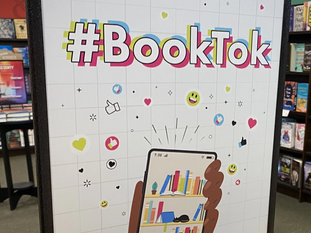
Royalties and Advances at Traditional Publishers
3 min de lectura
When an author begins working with traditional publishers, they encounter the terms “royalties” and “advances.” However, throughout my career, I have noticed that many authors do not fully understand these concepts. This article aims to clarify both terms and provide key information so authors can negotiate in an informed manner.

What are royalties?
Royalties are payments that authors receive for the sales of their books when they have licensed their rights to a publisher. These payments are a percentage of the sales generated and can vary depending on the author's prestige and ability to generate income. In general, royalties range from 5% to 20% or more in some cases.
There are two main types of royalties:
1. Net royalty: It is calculated based on the sales price to the distributor, after deducting associated costs.
2. Royalty based on retail price: It is calculated based on the final price to the consumer.
Traditional publishers usually depend on distributors to sell their books, which means that the retail price is defined considering production and distribution costs. The most common royalty is the net royalty.
Example of royalty calculation
Net royalty:
- Retail price: $16.99
- Distributor discount: 60%
- Net retail price to distributor: $6.80
- Author's royalty (10% of net price): $0.68 per unit sold
Royalty on retail price
- Retail price: $16.99
- Author's royalty (10% of retail price): $1.69 per unit sold.
These calculations are examples so that authors can better understand the royalty system and can negotiate their contract in an informed manner. It is important to emphasize that this article is not a substitute for the advice of an attorney, who should review each contract.
What are advances?
Advances are advance payments made by the publisher to the author based on an estimate of sales. These payments represent future royalties and the author will not receive new royalties until the advance has been fully recovered.
Example of advance calculation:
- Publisher grants an advance of $10,000.
- 1,000 units of the book are sold at a net price of $6.80
- Total sales generated: $6,800
- $3,200 to go before the author begins to receive royalty payments.
Frequency of royalty payments and/or royalty reports
Royalty payments and/or royalty reports are generally made once or twice a year, depending on the contract. The most common option is once a year, although authors may negotiate on this point. Regardless of whether there is an advance payment to be met, the author must receive his or her report.
Key aspects to consider before signing a contract
If you are an established author with a successful sales history, you should review:
1. Royalty type: net or over public sale price
2. Royalty percentage
3. Term of contract
4. Publisher's marketing plan
5. Advance according to first year sales potential.
6. Publisher's support at launch
7. Royalty payment schedule
If you are a new author, consider:
Royalty rate.
Royalty percentage
Duration of the contract
Publisher's marketing plan to position your book and your brand.
Royalty payment schedule
Do not ask for large advances, as this could affect future negotiations with the publisher.
Our goal with this article is to educate authors to enter into negotiations with publishers in an informed manner. Knowing these concepts will enable you to make strategic decisions that protect your rights and maximize your revenue.
At The Book Industry, we can help authors understand the publishing process and guide them through every step of their publishing journey.






